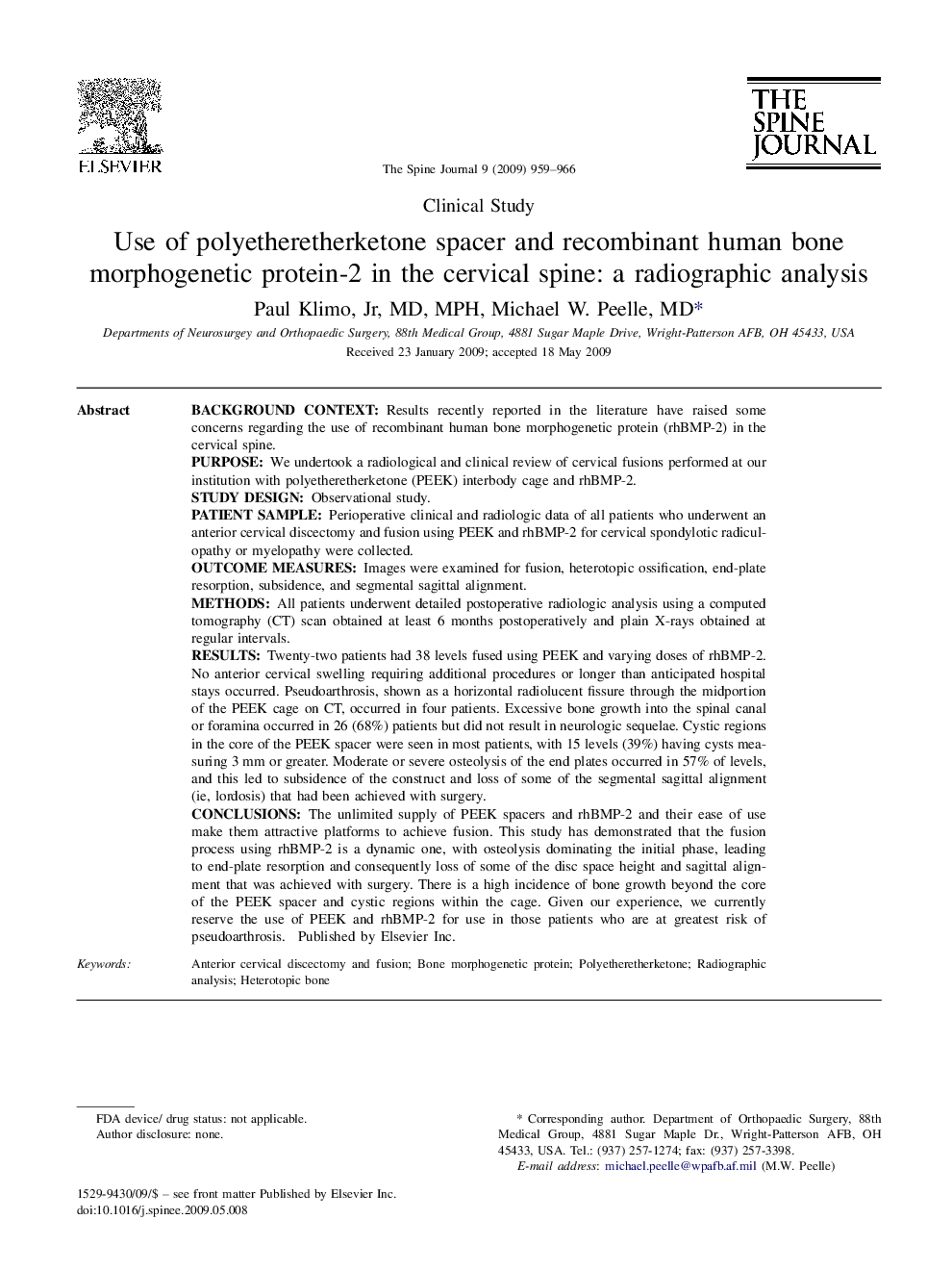| کد مقاله | کد نشریه | سال انتشار | مقاله انگلیسی | نسخه تمام متن |
|---|---|---|---|---|
| 4099304 | 1268636 | 2009 | 8 صفحه PDF | دانلود رایگان |

Background contextResults recently reported in the literature have raised some concerns regarding the use of recombinant human bone morphogenetic protein (rhBMP-2) in the cervical spine.PurposeWe undertook a radiological and clinical review of cervical fusions performed at our institution with polyetheretherketone (PEEK) interbody cage and rhBMP-2.Study designObservational study.Patient samplePerioperative clinical and radiologic data of all patients who underwent an anterior cervical discectomy and fusion using PEEK and rhBMP-2 for cervical spondylotic radiculopathy or myelopathy were collected.Outcome measuresImages were examined for fusion, heterotopic ossification, end-plate resorption, subsidence, and segmental sagittal alignment.MethodsAll patients underwent detailed postoperative radiologic analysis using a computed tomography (CT) scan obtained at least 6 months postoperatively and plain X-rays obtained at regular intervals.ResultsTwenty-two patients had 38 levels fused using PEEK and varying doses of rhBMP-2. No anterior cervical swelling requiring additional procedures or longer than anticipated hospital stays occurred. Pseudoarthrosis, shown as a horizontal radiolucent fissure through the midportion of the PEEK cage on CT, occurred in four patients. Excessive bone growth into the spinal canal or foramina occurred in 26 (68%) patients but did not result in neurologic sequelae. Cystic regions in the core of the PEEK spacer were seen in most patients, with 15 levels (39%) having cysts measuring 3 mm or greater. Moderate or severe osteolysis of the end plates occurred in 57% of levels, and this led to subsidence of the construct and loss of some of the segmental sagittal alignment (ie, lordosis) that had been achieved with surgery.ConclusionsThe unlimited supply of PEEK spacers and rhBMP-2 and their ease of use make them attractive platforms to achieve fusion. This study has demonstrated that the fusion process using rhBMP-2 is a dynamic one, with osteolysis dominating the initial phase, leading to end-plate resorption and consequently loss of some of the disc space height and sagittal alignment that was achieved with surgery. There is a high incidence of bone growth beyond the core of the PEEK spacer and cystic regions within the cage. Given our experience, we currently reserve the use of PEEK and rhBMP-2 for use in those patients who are at greatest risk of pseudoarthrosis.
Journal: The Spine Journal - Volume 9, Issue 12, December 2009, Pages 959–966